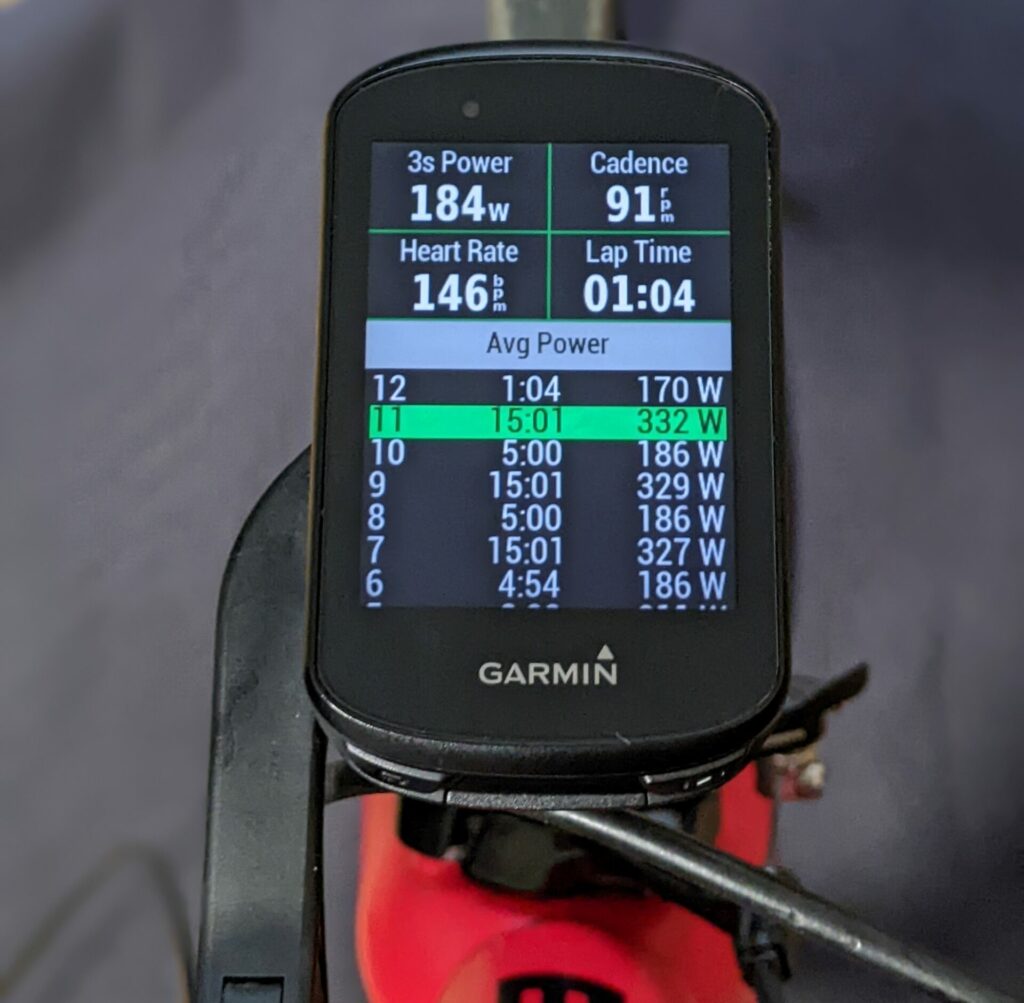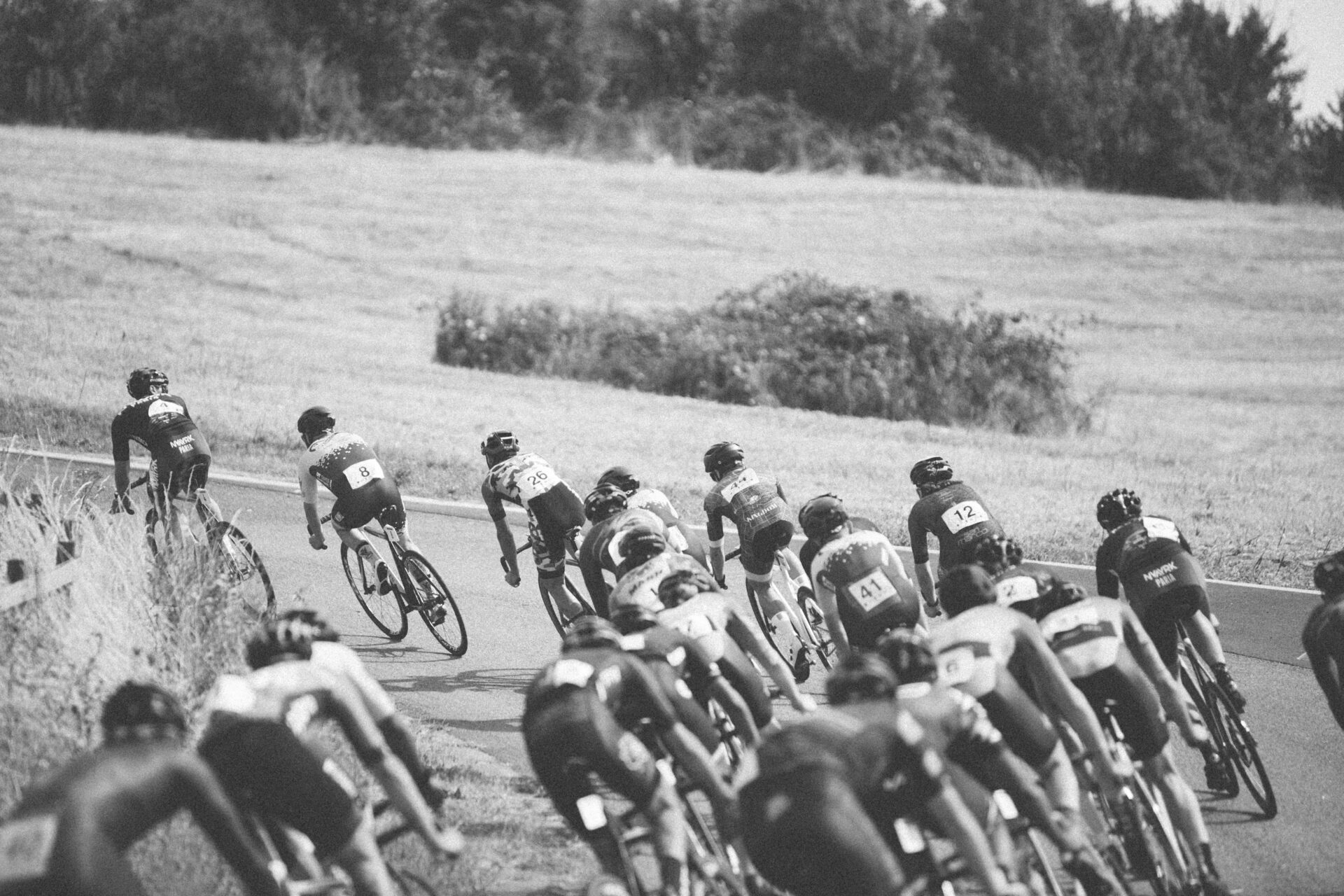Have you ever seen someone winning bike races just from riding easily? I don’t. If you’ve ever done a bike race you know what I’m talking about. Because to be successful in cycling our training should replicate more than zone 2 endurance training, though zone 2 is the base for everything else.
To drive progress we need to change our training over time by intensity discipline. The best way to do this is interval training.
And one of those all-important sessions to set yourself up for race-winning moves is sweet spot training.
What is Sweet Spot Training?
The sweet spot refers to a specific intensity of a workout. In the Coggan Zone model, it’s on the cusp of the tempo zone (zone 3) and the threshold zone (zone 4). This transfers to 88-94% of your Functional Threshold Power (FTP).
Efforts at the sweet spot are a little harder than tempo rides, yet you’re still moving sub-threshold. You put your system under sustained stress that is repeatable and manageable for long durations. These durations are required and desired to cause the necessary adaptations.
The consistency of sub-threshold workouts builds a big aerobic “engine.” An engine that is ready for a tough race.
Whereas riding in zone 2 at 55-75% of your FTP is the typical endurance pace that should make up the bulk of your training, think of sweet spot training as the perfect complement to prolonged endurance training to build a solid foundation.
Claiming that a session like “sweet spot” makes you a faster bike rider sounds logical enough. But what are the actual benefits of sweet spot training? Let’s talk about that now.
Why Sweet Spot Training Increases Your FTP
The benefits of sub-threshold efforts emerge in our most important assets: Our muscles. Because riding at this particular intensity alters our muscle fiber composition. We have two types of fast-twitch muscle fibers. The Type-IIX and the Type-IIA fibers. The former is highly glycolytic and inefficient in aerobic work.
By spending time at the sweet spot we fatigue these fibers by gradual carbohydrate expenditure. The result is a conversion of Type-IIX fibers into more fatigue-resistant Type-IIA fibers.
On a muscular level, this intensity enhances capillarization in muscles and improves oxygen supply. That leads to improved fat oxidation.
On a cellular level, sweet spot training increases mitochondrial density and the number of enzymes that improve lactate clearance capacity. The more mitochondria you have, the easier it is for your body to produce energy (think ATP), and the better your oxygen uptake. The better our lactate clearance capacity, the less lactate is found in blood, and the higher we can push our anaerobic threshold (AT).
Thus sweet spot training is great for improving FTP and pushing it up from below. We ride below the threshold so it’s an aerobic stimulus.
As FTP is a great predictor of endurance performance, one training goal should always be increasing our FTP in a way that builds stamina and fatigue resistance. If you train for a criterium or an ultra-endurance gravel race, a high FTP reflects a cyclist’s repeated sprint ability or capability for late-race attacks.
Yet there’s more to sweet spot training than “just” physiological adaptations.
Other Benefits of Sweet Spot Training
Perhaps two other key factors of sweet spot sessions are pacing and mental toughness. Anyone who has mastered the art of sweet spot –whether they are a pro or a cat. 1 rider– has developed the ability to pace over long climbs and the mental stamina it takes to sustain such long durations at a hard pace.
Reaping the training adaptations is all we want but developing the resilience it takes to conquer all intervals until done is a powerful trait. You will learn a lot about yourself when you put yourself in the repeated hurtbox all on your own.
And the pacing you acquire will help you outplay your competitors. While they hammer all out into the climb, you pedal smoothly and steadily to reach the top first. Because you know what it’s like to hit the sweet spot.
Executing a Sweet Spot Training Plan
If you want to get the benefits of sweet spot training, set up your correct training zones to arrange your individual “sweet spot.” That’s done by using a power meter on your bike and doing an FTP test.
Your FTP is the highest power you can maintain in a quasi-steady state without fatiguing (around 60 minutes for trained athletes). Exceed your FTP and fatigue occurs much sooner. Stay below FTP and you can maintain that power much longer. Heart rate, however, is not an accurate tool to assess training zones. Read more about why training with a power meter is helpful.
When designing a training plan and we want to include sweet spot intervals, there are three key factors we always need to consider: Duration, frequency, and intensity.
If you have more than 5 hours to train per week, you should already think about planning your training with the right frequency of zone 2 rides and intervals to maximize gains.
Even this sub-threshold intensity should be done as interval sessions because riding above the first lactate turn point (roughly the upper end of zone 2) already creates autonomic stress. Stress you need to recover from. Your body doesn’t distinguish between sweet spot, threshold, or VO2max intervals. Stress for the autonomic nervous system is created once you exceed that “first threshold.”
For example, start with one interval session per week at the beginning of the base phase. During the build and in season stick to two interval sessions per week. Do no more than occasionally three sweet spot sessions per week, just if you want to kill your gains. You know, with higher fatigue you get to the point of diminishing returns.
Warm-up at the beginning of each session. As a racing beginner, start with 8-minute intervals and progress up to 20 minutes per interval. Cat. 3 cyclists should be able to complete 2×20 minutes of sweet spot intervals. Higher categories should be able to even complete 4×20 minutes of sweet spot or 3×30 minutes at the sweet spot, depending on the requirements of your event.
Progress the duration of the sweet spot intervals only if you can complete each set at roughly the same power as the first. Cracking on the last interval set won’t help in building Functional Threshold Power. Avoid that mistake and you’ll fly.
And of course, you shouldn’t train at the sweet spot all year long. You will reach a ceiling when you should progress to more intense sessions like threshold or VO2max intervals.
Here’s an example of sweet spot workouts to upgrade your fitness to the next level.

Sweet Spot Training Examples
Three sessions to go for: A starter session, an intermediate one, and an elite one. Great for indoor training or as a Zwift workout where you’re uninterruptedly focused. If done on the road or a climb, adjust recovery times in between interval sets as needed.
1. Sweet Spot Starter Session
- Warm-up for 15 minutes including 3 minutes at 98-103% of FTP
- 5 minutes 50-55% of FTP
- 8 min at Sweet Spot 88-94% of FTP
- 4 min 50-55% FTP
- 8 minutes at Sweet Spot 88-94% of FTP
- 4 minutes 50-55% of FTP
- 8 minutes at Sweet Spot 88-94% of FTP
- Cool down: 10-11 minutes 50% of FTP
Total Time: 1h
2. Intermediate Sweet Spot Session
- Warm-up for 20 minutes including 3 minutes at 98%-103% of FTP
- 5 minutes 50-55% of FTP
- 10 minutes at Sweet Spot 88-94% of FTP
- 5 minutes 50-55% of FTP
- 10 minutes at Sweet Spot 88-94% of FTP
- 5 minutes 50-55% of FTP
- 10 minutes at Sweet Spot 88-94% of FTP
- 5 minutes 50-55% of FTP
- 10 minutes at Sweet Spot 88-94% of FTP
- Cool down 50% of FTP
Total time: 1h30min
3. Elite Sweet Spot Session
- Warm-up for 20 minutes including 3 minutes at 98%-103% of FTP
- 5 minutes 50-55% of FTP
- 20 minutes at Sweet Spot 88-94% of FTP
- 5 minutes 50-55% of FTP
- 20 minutes at Sweet Spot 88-94% of FTP
- 5 minutes 50-55% of FTP
- 20 minutes at Sweet Spot 88-94% of FTP
- 5 minutes 50-55% of FTP
- 20 minutes at Sweet Spot 88-94% of FTP
- Cool Down 50% of FTP
Total time: 2h15min
Ready to Enhance Your Training?
If you enjoyed this and want to improve your cycling performance, then get your hands on one of my plans on TrainingPeaks and ride faster for longer, or click below to get my specific base, build, and peak plans for amateur and elite cyclists:
- RV The Block Periodization Plan, 4 Weeks (6-8 Hours)
- RV Improve Your FTP, 8 Weeks on 6 Hours, 10 Hours, or 15 Hours
Follow me on Instagram for more Cycling Content.
Get The Newsletter
Receive pragmatic cycling advice, great ideas, and inspiring stories that will make you a better athlete delivered to your inbox each week.
Studies used in this article:
1. https://www.researchgate.net/figure/The-effects-of-training-on-muscle-fibers_tbl3_267201890
2. https://pubmed.ncbi.nlm.nih.gov/17762370/#:~:text=Conclusions%3A%20In%20the%20highly%20trained,subjects%20after%20high%2Dintensity%20exercise.
3. https://pubmed.ncbi.nlm.nih.gov/20861519/
